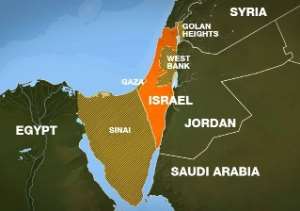
The Israel–Palestine conflict is one of the most enduring and emotionally charged disputes in modern history. Rooted in competing national identities and historical grievances, it has shaped geopolitics, displaced populations, and sparked decades of war and negotiation. Below is a timeline of major events that shaped this unfolding struggle.
Late 1800s – Early 1900s: The Rise of Nationalisms
1897 – The First Zionist Congress is held in Basel, Switzerland, under Theodor Herzl, advocating for a Jewish homeland in Palestine. Early 1900s – Arab nationalism begins to emerge in response to Ottoman control and growing European influence.
1917–1947: British Mandate and Mounting Tensions
1917 – The Balfour Declaration commits British support for a Jewish “national home” in Palestine, creating conflicting expectations between Jews and Arabs. 1920–1939 – Waves of Jewish immigration increase due to European antisemitism, met by Arab resistance and revolts. 1936–1939 – The Arab Revolt against British colonial rule and Jewish immigration is suppressed, but tensions deepen. 1947 – The United Nations proposes the Partition Plan, recommending separate Jewish and Arab states. Jews accept; Arabs reject.
1948–1967: Wars and Displacement
1948 – State of Israel is declared. Neighboring Arab states invade. Israel emerges victorious, gaining more territory than allocated in the UN plan. The Nakba (“Catastrophe”): Over 700,000 Palestinians are displaced or flee during the conflict. 1956 – Suez Crisis: Israel, Britain, and France invade Egypt over the nationalization of the Suez Canal. They withdraw under international pressure. 1967 – Six-Day War: Israel captures the West Bank, East Jerusalem, Gaza Strip, Sinai Peninsula, and Golan Heights—territories still central to disputes today.
1967–1993: Occupation and Intifadas
1973 – Yom Kippur War: Egypt and Syria launch a surprise attack to reclaim lost lands. Ends in military stalemate, but shifts diplomacy. 1978 – Camp David Accords: Egypt becomes the first Arab state to sign a peace treaty with Israel. 1987–1993 – First Intifada: A grassroots Palestinian uprising against Israeli occupation erupts in the West Bank and Gaza.
1993–2000s: Hope and Disillusionment
1993 – Oslo Accords: Israel and the Palestine Liberation Organization (PLO) mutually recognize each other; a peace process begins. 2000 – Second Intifada: Violence returns after peace talks collapse. Suicide bombings, military crackdowns, and expanded settlements follow. 2005 – Israel unilaterally withdraws from Gaza but maintains control over borders, airspace, and coastal waters.
2010s–Present: Entrenched Divides
2006 – Hamas wins Palestinian elections, leading to a political split with the West Bank-based Fatah. 2012–2021 – Multiple wars between Israel and Hamas in Gaza, punctuated by ceasefires and international condemnation of civilian casualties. 2017 – The U.S. recognizes Jerusalem as Israel’s capital, drawing global criticism and protests across the Arab world. 2020 – Abraham Accords: Several Arab countries normalize ties with Israel, sidelining Palestinian claims. 2021–Present – Escalating settler violence, military raids, and widening public distrust continue to overshadow any diplomatic progress.
The Israel–Palestine conflict remains unresolved, caught in cycles of violence, negotiation, and international intervention. Each historical milestone leaves lingering legacies that fuel present-day realities. Any path to peace must grapple with these deeply rooted narratives and lived experiences—on both sides of the divide.
Retired Senior Citizen
Teshie-Nungua
[email protected]


